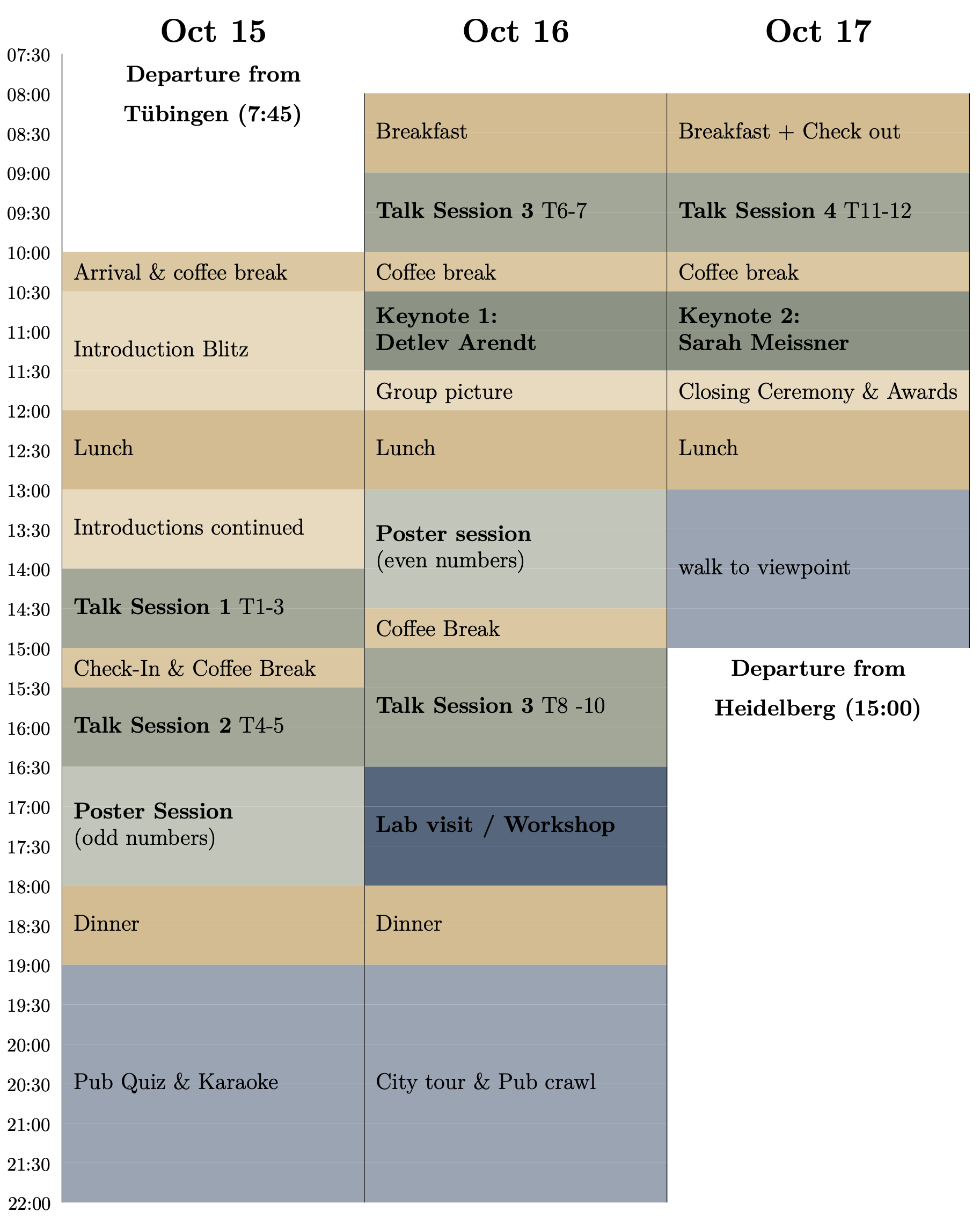NeNa (Neurowissenschaftliche Nachwuchskonferenz) is an annual junior neuroscientists conference organized by doctoral students from the vibrant neuroscience community of Tübingen.
About NeNa
We aim to accommodate broad interests including cellular, molecular, behavioral, cognitive, and theoretical neuroscience. NeNa provides young scientists from Tübingen and elsewhere with a low-threshold opportunity to present their work in posters and talks, discuss it with their peers as well as with the leading scientists we invite each year as keynote speakers.
Location and Time
This year, we are excited to invite young neuroscientists from all over to join us in Heidelberg from October 15 to 17. We will stay at the Youth Hostel.
Keynotes
Dr. Sarah Meissner
Dr. Meissner has recently become an assistant professor at the department of health sciences and technology at ETH Zurich. She is interested in the underlying neural dynamics of motor and cognitive functions with an interest in bridging the gap between science and health. Her research is aimed at understanding the mechanisms of self-regulation through an innovative scientific method using neurofeedback or more specifically pupil-based biofeedback in combination with EEG and TMS recordings.
The brain’s arousal level is controlled by several neuromodulatory nuclei known to substantially influence mental well-being and core behavioral functions. Dysregulated arousal has been tightly linked to cognitive, psychiatric, and sleep-related disorders. In recent studies, we showed that healthy individuals can volitionally control their arousal level using pupil-based biofeedback. This approach inverts the previously established link between the activity of arousal-regulating centers in the brainstem, such as the locus coeruleus, and pupil dynamics. We have shown that applying pupil-based biofeedback systematically modulates (1) activity of the locus coeruleus and other brainstem structures involved in arousal control, (2) cortical and cardiovascular arousal markers, (3) cortical excitability, and (4) behavioral and cortical responses during an attention task. Furthermore, we could recently show that pupil size reveals arousal level fluctuations not only during wake but also in human sleep. Tracking such fluctuations during sleep and wake and making the arousal system accessible to volitional control through pupil-based biofeedback offers important potential for translation to clinical applications across various domains. Future studies are key to better understand the neurobiological mechanism of arousal self-regulation and to demonstrate that tapping into this mechanism modulates dysregulated arousal states.
Dr. Detlev Arendt
Dr. Arendt’s group investigates the evolution of the central nervous system, focusing on the last common ancestor of bilaterians (Urbilateria). His research includes a comparative approach across model organisms, particularly the marine annelid Platynereis dumerilii, the sea anemone Nematostella, and the lancelet amphioxus, to study cell type-specific gene regulatory networks as well as other neurobiological and behavioural aspects. In addition, his team is keen to build a neuron-type atlas of the Platynereis larval brain.
Schedule

Organizers
- Albina Farkhutdinova
- Gabriela Iwama
- Julia Siodmiak
- Laura Heidiri
- Lioba Fortkord
- Luzie Kallfaß
- Mara Wolter
- Sara Silva Leite
- Theresa Horn
